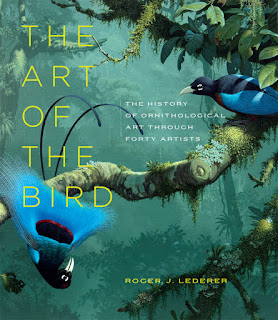Lederer notes that today, with a growing interest in birds in their natural habits, they have become "our most apparent connection to nature. Their songs, their colours, their freedom in the air ... constantly remind us that there is a world external to the everyday one we live in." Some contemporary bird art is scientific, as found in field guides; some is intended to evoke emotion.
Lederer, professor emeritus of biological sciences at Chico State, captures the vast range of creation in "The Art Of The Bird: The History Of Ornithological Art Through Forty Artists" ($35 in hardcover from the University of Chicago Press; also for Amazon Kindle). It is a sumptuous coffee table book, stunningly beautiful in its many full-page reproductions. In ten mostly chronological chapters, Lederer begins with Flemish Baroque Artists (1580-1700) and concludes with living artists such as Raymond Harris-Ching and David Allen Sibley.
Along the way we meet John James Audubon (1785-1851), who "made bird paintings famous with his life-size prints of almost 500 bird species. These are realistic to a great degree, although Audubon worked with dead specimens that he shot and mounted in a wire frame, not always in the most natural pose." Edward Lear (1812-1888) "was born in London, the twentieth of 21 children ... the first major bird artist to draw birds from life instead of skins." He also popularized the limerick.
Roger Tory Peterson (1980-1996) created the modern field guide, drawing birds to show "the most important features for identification, now called 'field marks'" (something photography might not do as well). Chico's own Janet Turner (1914-1988) is also included; her "prints were all about mood."
Here is a book that will put readers in a celebratory mood and, with the rustling of each page, stir a sense of wonder.
